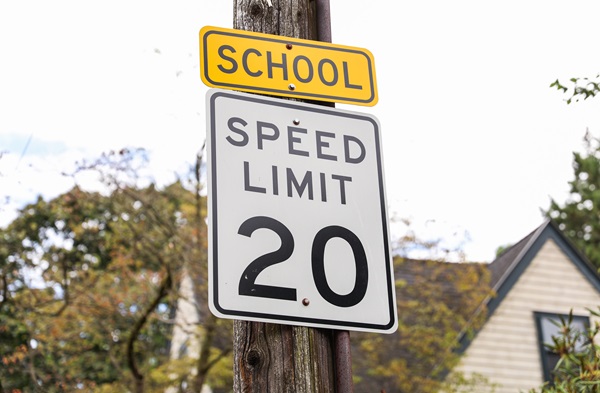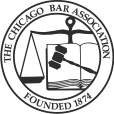
School Zones Must Actually Keep Children Safe
Chicago woke up to heartbreaking news on September 18. Nine-year-old Anakin Perez was struck and killed outside McNair Elementary on West Walton Street in Austin. According to initial reports and referenced in an article published on Streetsblog Chicago (of which Keating Law Offices is a sponsor), the driver was cited for failure to exercise due care for a pedestrian in the roadway, and Anakin was at least the 20th person struck and killed by a driver on Chicago streets this year. The questions that followed were immediate and necessary. How does a child die in front of a school on a one-way residential street with speed humps and school zone signs? Why didn’t our safety measures work when it mattered most?
This cannot be another statistic or a brief news cycle moment. Chicago needs to treat Anakin’s death as a turning point. As a law firm that represents pedestrians and cyclists citywide, we’ve seen the same pattern over and over: warnings without enforcement, signage without street design that slows drivers, and grief that arrives long before meaningful changes do.
What Went Wrong On Walton Street?
Walton is a one-way residential block with parked cars on both sides, posted 20 mph school zone signs, and two speed humps. On paper, that sounds protective. In practice, it wasn’t enough. Drivers often slow for a hump, then speed up between them. Worn markings and long mid-block stretches reduce visibility where families naturally cross to reach a school entrance. Even the vehicle type wasn’t the usual culprit that many people imagine. Reports indicate the driver was in a sedan, not a large SUV or truck. The issue here isn’t only the size of the vehicle. It’s speed, visibility, attention, and a street that didn’t forgive a predictable mistake in a place where kids travel every day.
Some have tried to shift the focus to a child crossing mid-block. That’s the wrong lesson. Children are going to take the most direct route to the school door, especially when they’re running late. Safe school streets account for that reality. If the design requires perfect behavior from kids in order to prevent tragedy, the design isn’t working.
Engineering That Saves Lives
Physical design is what reliably slows drivers and protects people on foot. Signs alone don’t change behavior. On school blocks like Walton, Chicago should prioritize:
- Raised Mid-Block Crossings With Lighting: Meet the desire line where families already cross, elevate the crosswalk to sidewalk level, and make people visible day and night.
- Curb Extensions And Narrowed Lanes: Tighten turning radii and shorten crossing distance so drivers have to slow down and look for people.
- Daylighting Near Crossings: Remove a small number of parking spaces near crosswalks to clear sight lines around parked cars.
- Continuous Sidewalk-Level Treatments: Carry sidewalks across alleys and driveways so drivers expect pedestrians and slow automatically.
These are proven measures that don’t rely on wishful thinking. They change the way streets feel behind the wheel, which changes how drivers behave. For schools citywide, Chicago’s School Zone Improvement projects need funding and timelines that match the urgency families live with every morning and afternoon.
Enforcement That Works Where It’s Needed
Enforcement is only effective when it’s consistent and targeted. If a block is signed at 20 mph during school hours, drivers should encounter the kind of enforcement that makes 20 mph real. That can include regular police enforcement, well-placed camera enforcement where permitted, and crossing support that actually matches how families move to and from the building.
Crossing guards are invaluable, but they’re often stationed at intersections even when most families cross mid-block to reach the main doors. If staffing is limited, positions should follow the desire lines and the riskiest conflict points. Enforcement should also prioritize distracted driving in school zones. The difference between a near miss and a fatal crash is often a glance at a screen.
Education That Targets The Right Audience
Kids already hear messages about looking both ways and using crosswalks. The more urgent education is for adults who create the risks: parents rushing drop-off, delivery drivers on schedules, and through-traffic that treats a school block like any other street. School leaders can help by pushing clear, recurring messages to families at the start of every term and before high-traffic days. Slow down below 20 mph, put the phone away, yield to people walking, expect mid-block crossings, and treat the whole block as a walking zone during arrival and dismissal.
Education can’t replace design or enforcement, but it amplifies both. When families and neighbors hear the same safety priorities from principals, alder offices, and city agencies, norms shift.
Encouragement That Reduces Car Volumes
Fewer vehicles near the school means fewer potential conflicts. Many Chicago schools sit within neighborhoods where families live within a one-mile radius. Walk-to-School days, walking school buses, and bike trains reduce pressure at the curb and remind drivers that children are present throughout the block, not just at corners. Where the street layout allows, “school streets” that are temporarily closed to through traffic during arrival and dismissal can transform chaotic curbside scenes into calm, predictable spaces for kids.
A Practical Plan Chicago Can Start Now
Chicago has more than a thousand public and private K-12 schools. The scale is large, but the steps are clear. Here’s a practical framework for action that communities can push for immediately:
- Audit Every School Block: Map actual drop-off patterns and mid-block desire lines. Identify sight-line issues and speeding patterns between humps.
- Install One High-Impact Treatment Per School: Start with raised mid-block crosswalks at the main entrance or curb extensions at the key desire line. The first fix should address the most common movement families actually make.
- Targeted Enforcement During Peak Windows: Choose the two highest-risk 30-minute periods and enforce speed and distraction consistently for the first month of each term.
- Daylight Crossings: Remove the minimum number of parking spaces needed to clear sight lines. Pair daylighting with signage and fresh markings.
- Standardize the Message: Send a principal’s email and paper flyer twice each term with clear, simple rules for drivers in school zones.
None of these steps requires reinventing policy. They require focus, funding, timelines, and accountability.
Keating Law Offices Stands With Chicago Families
At Keating Law Offices, P.C., we ride Chicago’s streets, we walk these school blocks, and we represent families when preventable crashes turn into life-changing injuries or tragic losses. Anakin Perez’s death cannot fade into the background. Chicago has the tools to fix dangerous school streets. The city needs to use them, school by school, block by block, until safe arrival and dismissal are the rule across every neighborhood.
If you or your child was injured in a school-zone crash or any pedestrian collision in Chicago, we can help you understand your rights and your options. We investigate quickly, deal with the insurance companies, and pursue full compensation so families can focus on healing. Injured in a pedestrian accident in Chicago? Call 833-CALL-KLO or contact us online today for a free consultation.
"I was one of four victims of a hit & run incident outside Guaranteed Rate Field about one year ago. I interviewed several firms to represent me and gladly chose Keating Law Offices to represent me. This was a very difficult case as the driver was unlicensed, uninsured, and had no financial resources whatsoever. Mike Keating and his associates worked diligently with my auto and health insurers to collect a large award under my uninsured motorist coverage. It would not have been possible to collect without their help. I highly recommend the Keating Law firm. They are fair and diligent and tremendous advocates for victims of car violence." - Charles J., ⭐⭐⭐⭐⭐







